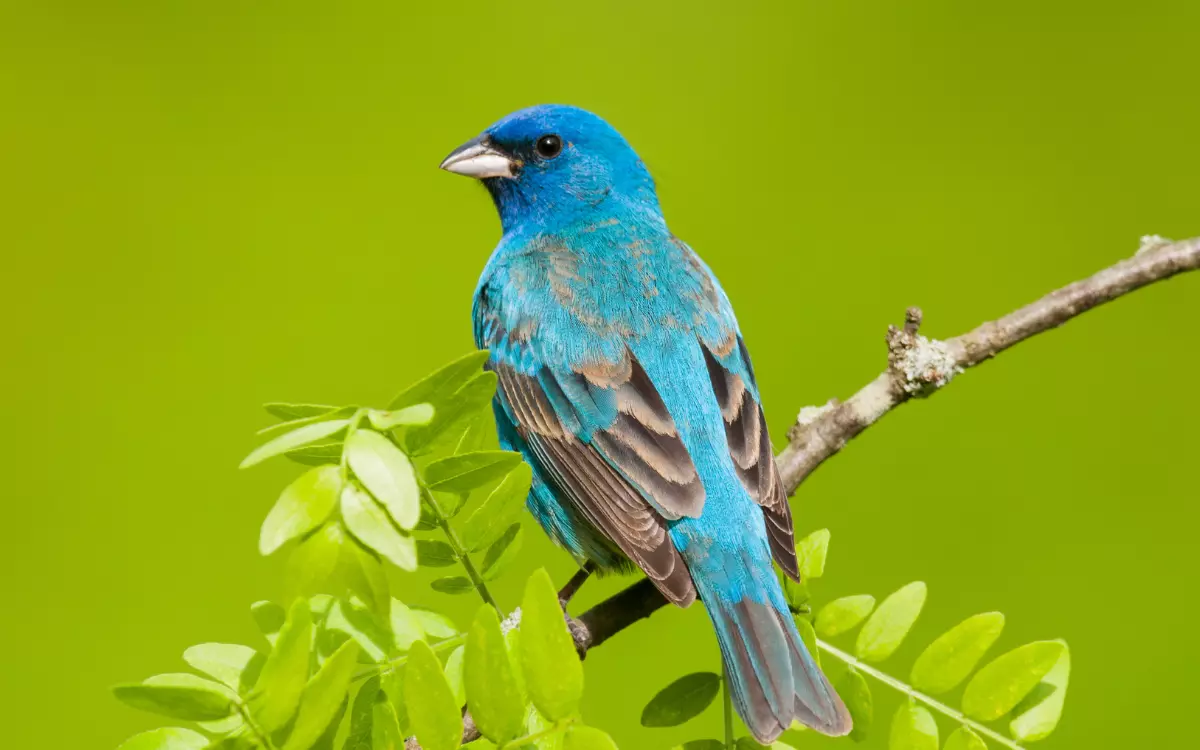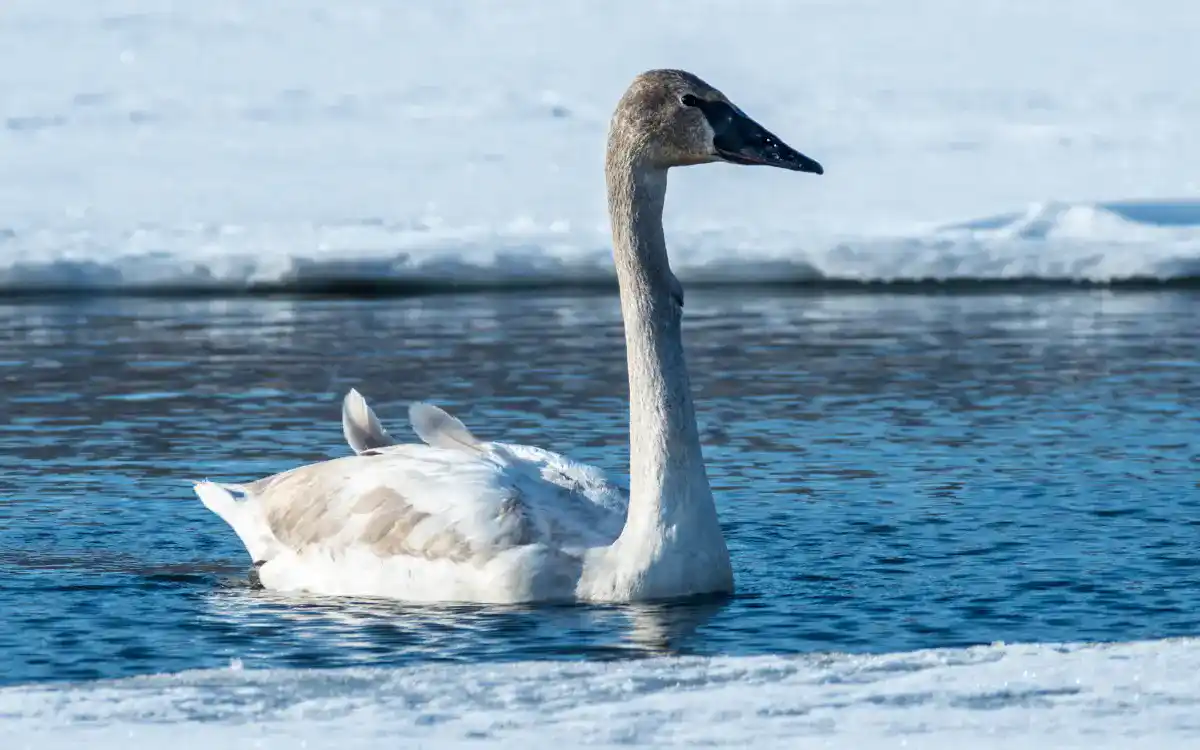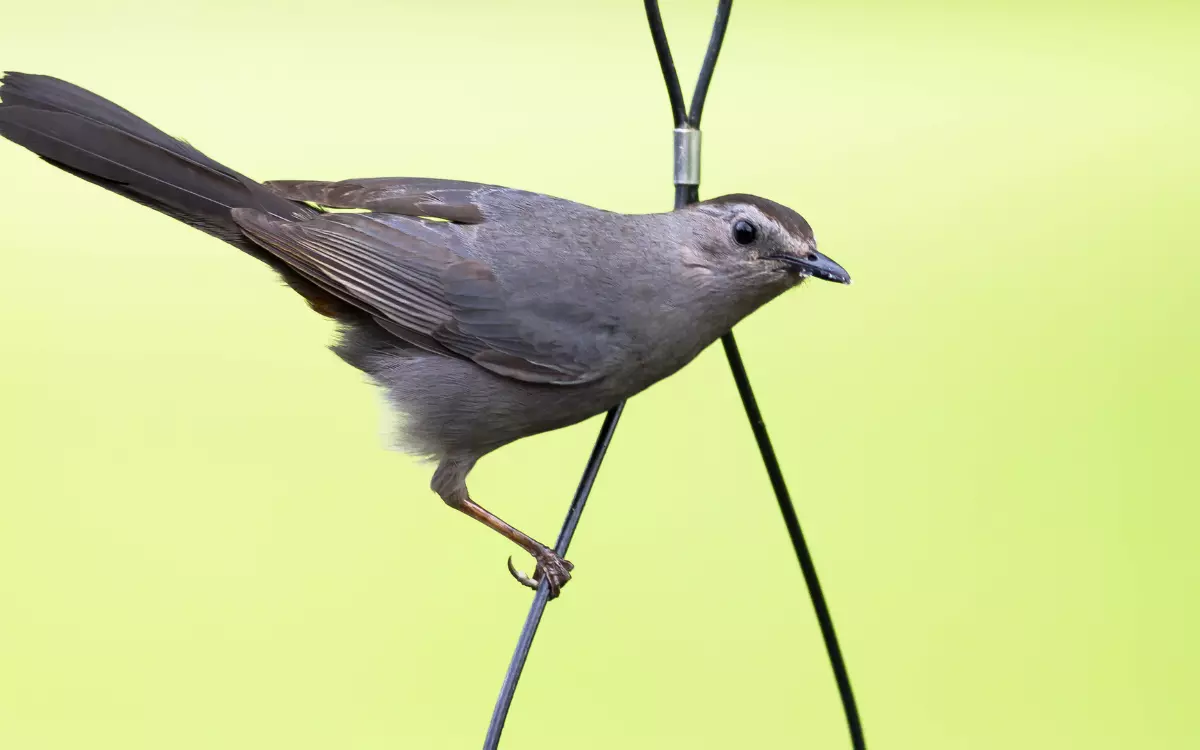Ducks in New Hampshire: A Comprehensive Guide
Let’s learn about ducks in New Hampshire! These pretty birds live in lakes and ponds, and they’re important for the environment. Ducks have cool sounds and bright feathers. Let’s find out more!
Types of Ducks Found in New Hampshire
1.Mallard (Anas platyrhynchos):
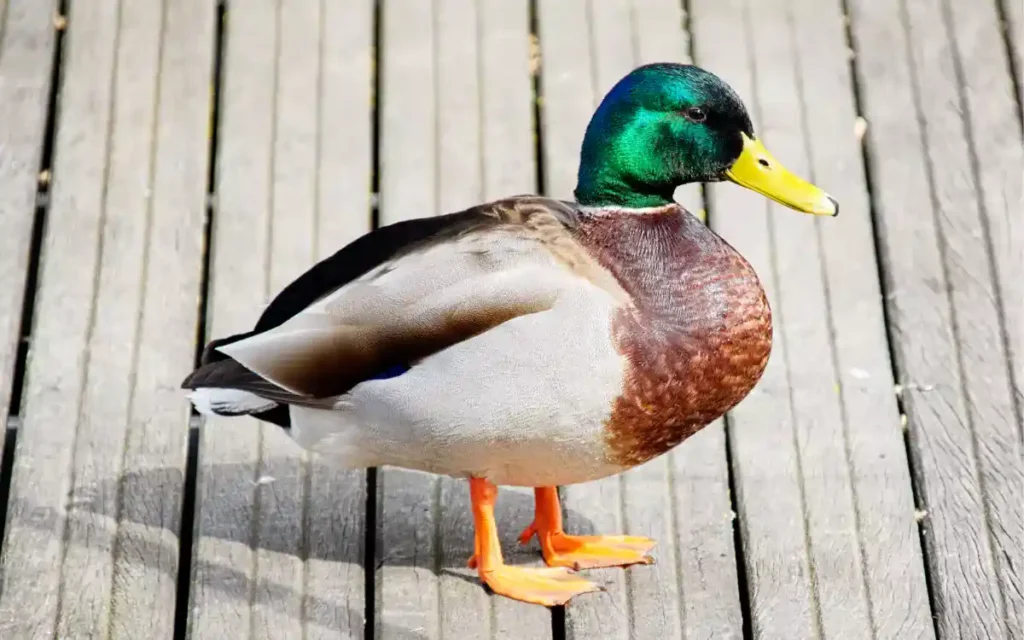
The Mallard is arguably the most iconic and recognizable duck species worldwide. With the male’s vibrant green head and the female’s mottled brown appearance, they are a staple in wetlands, ponds, and lakes.
Their adaptability to diverse habitats, from urban ponds to remote marshes, has contributed to their widespread presence. Their quacking, especially of the females, is what most people associate with duck sounds.
- Length: 19.7-28 inches (50-71 cm)
- Weight: 0.7-3.5 pounds (1000-1580 g)
- Wingspan: 32-39 inches (81-99 cm)
2.Blue-winged Teal (Anas discors):
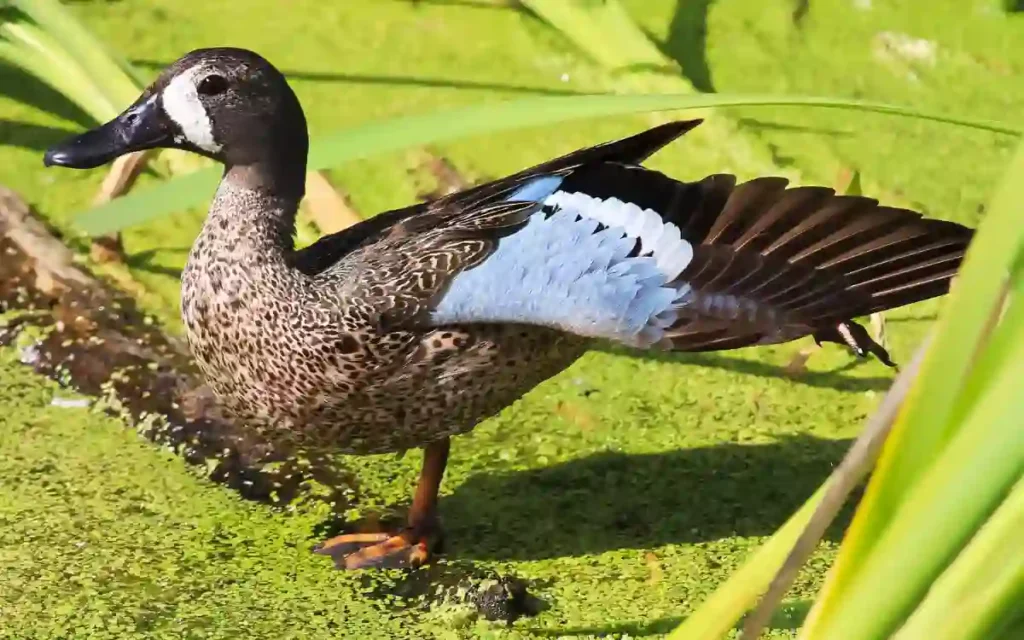
The Blue-winged Teal is a small, graceful dabbling duck known for its distinctive blue wing patch. These ducks are long-distance migrants, traveling from North America to South America.
Their preference for shallow ponds makes them a common sight in wetlands during migration. Their subtle beauty, combined with their agile flight, makes them a favorite among birdwatchers.
- Length: 14.2-16.1 inches (36-41 cm)
- Weight: 8.1-19.2 ounces (230-545 g)
- Wingspan: 22.1-24.4 inches (56-62 cm)
3.American Black Duck (Anas rubripes):
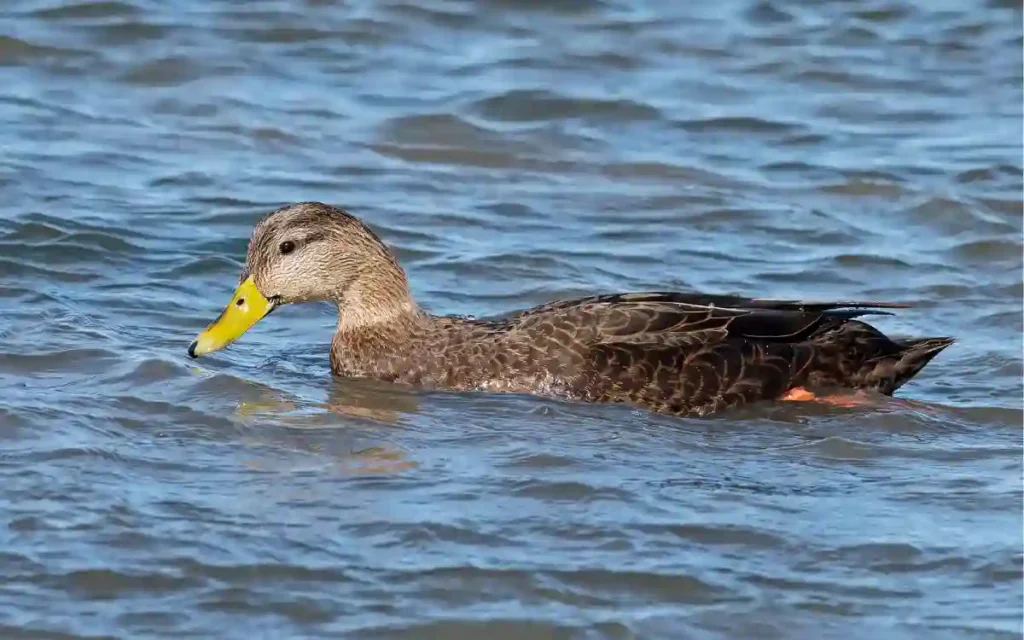
At first glance, the American Black Duck might be mistaken for a Mallard due to its similar shape. However, its darker plumage sets it apart. Native to eastern North America, this duck is a symbol of the region’s pristine wetlands.
While they often mix with Mallards, they maintain their distinct identity through their darker appearance and unique behaviors.
- Length: 21.3-23.2 inches (54-59 cm)
- Weight: 25.4-57.9 ounces (720-1640 g)
- Wingspan: 34.6-37.4 inches (88-95 cm)
4.Northern Shoveler (Anas clypeata):
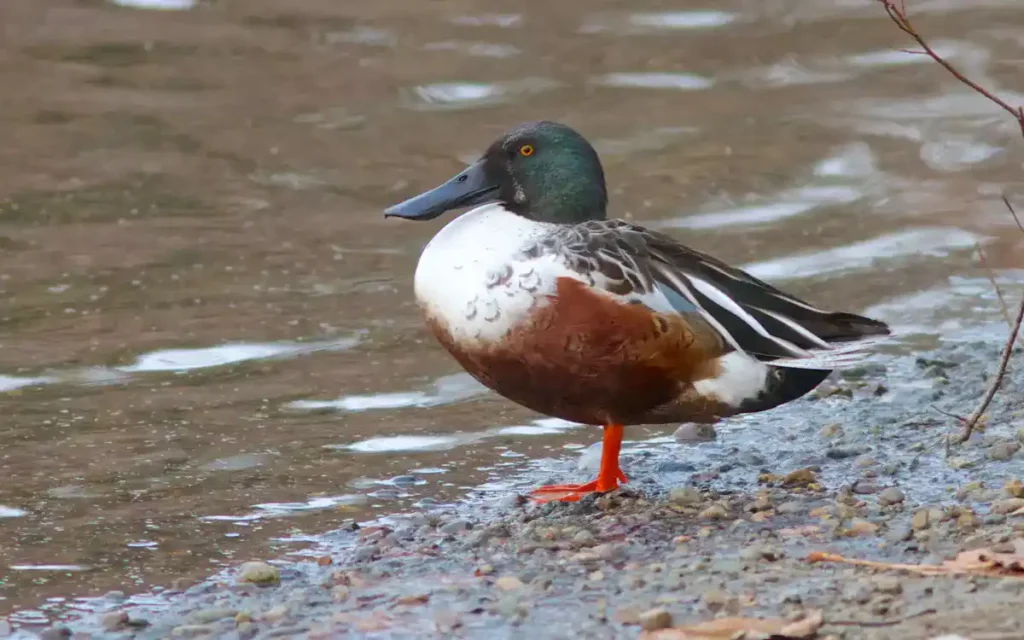
The Northern Shoveler stands out in the duck world with its oversized, spatulate bill. This unique feature is not just for show; it’s a specialized tool for sifting small food items from the water. With a mix of vibrant green, white, and rusty colors, the male is a sight to behold, especially during the breeding season.
- Length: 17.3-20.1 inches (44-51 cm)
- Weight: 14.1-28.9 ounces (400-820 g)
- Wingspan: 27.2-33.1 inches (69-84 cm)
5.Eurasian Wigeon (Mareca Penelope):
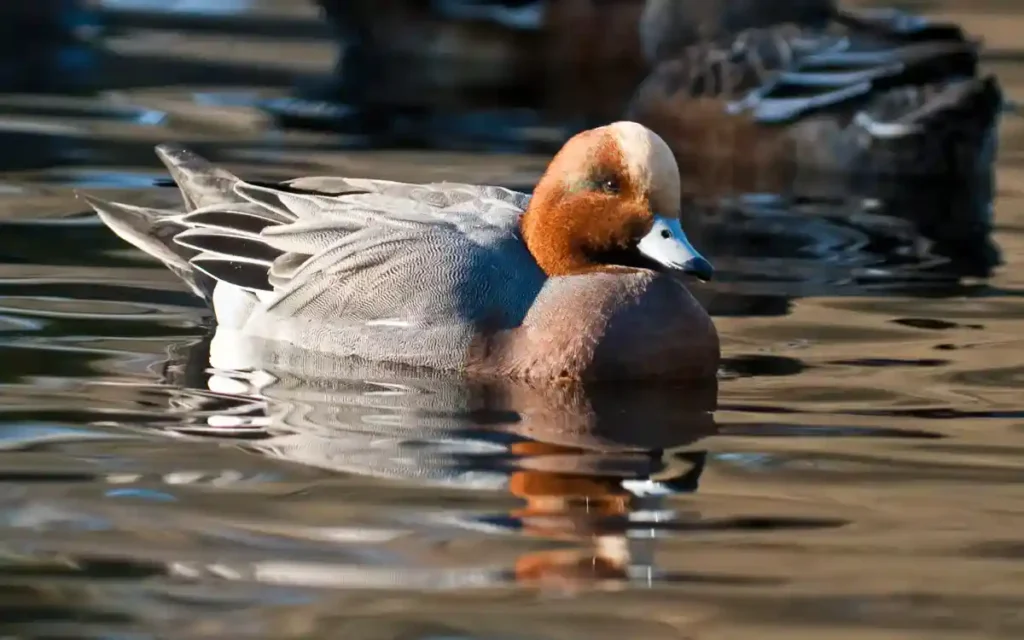
The Eurasian Wigeon, with its reddish-brown head and cream-colored forehead, is a visual treat. Native to the northernmost regions of Europe and Asia, they have a melodious whistle that adds charm to their presence.
Their migratory patterns and sociable nature often lead them to mix with other duck species, creating a delightful spectacle.
- Length: 17.7-20.5 inches (45-52 cm)
- Weight: 1.1-2.0 pounds (500-900 g)
- Wingspan: 29.5-33.9 inches (75-86 cm)
6.Northern Pintail (Anas acuta):
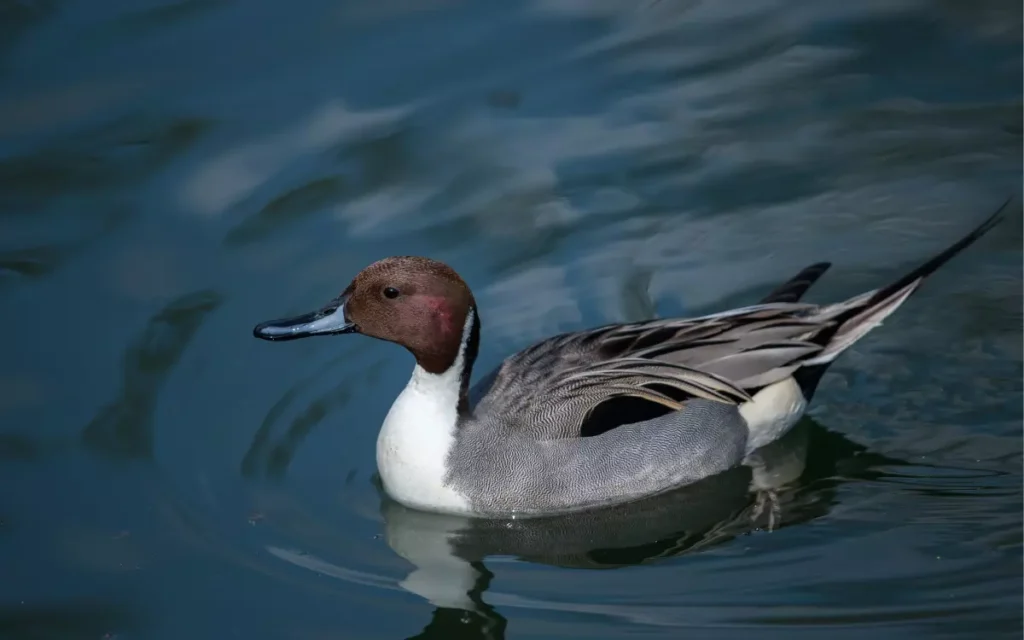
The Northern Pintail is elegance personified. With its slender body, long neck, and pointed tail, it’s a marvel of avian design.
The male’s chocolate-brown head contrasted by a white neck is especially striking. Their graceful flight, combined with their unique appearance, makes them a joy to observe.
- Length: 18-29.9 inches (46-76 cm)
- Weight: 1.91-3.00 pounds (870-1360 g)
- Wingspan: 31-37 inches (80-95 cm)
7.American Wigeon (Mareca Americana):
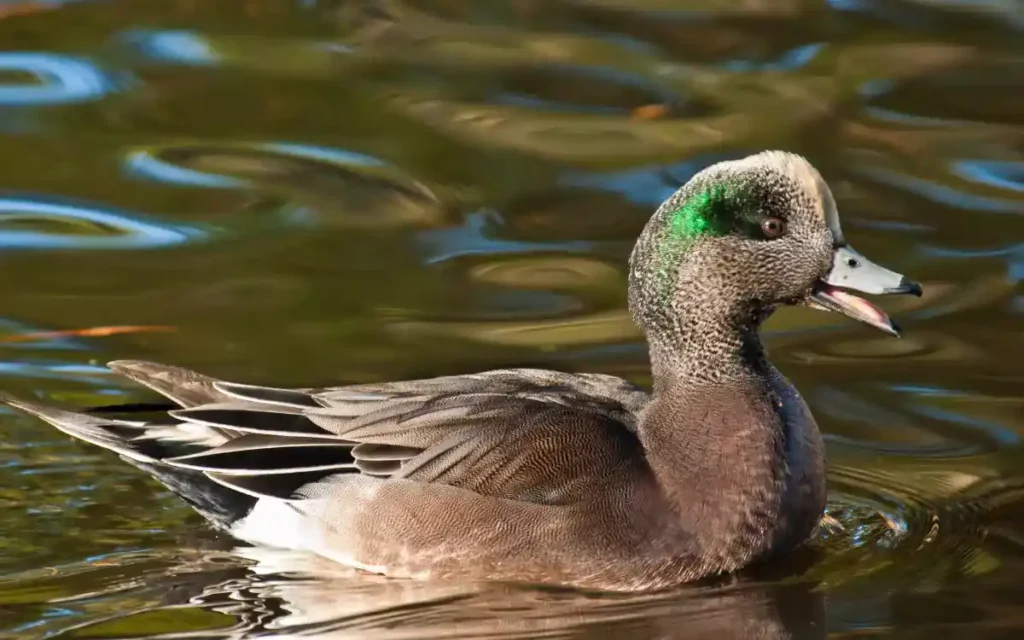
The American Wigeon is a dabbling duck with a palette of colors. The male’s green eye patch, white crown, and overall colorful appearance make it stand out. Unlike many other ducks, they often venture onto land to graze, showcasing their adaptability and diverse diet.
- Length: 16.5-23.2 inches (42-59 cm)
- Weight: 19.1-46.9 ounces (540-1330 g)
- Wingspan: 33.1 inches (84 cm)
8.Green-winged Teal (Anas crecca):
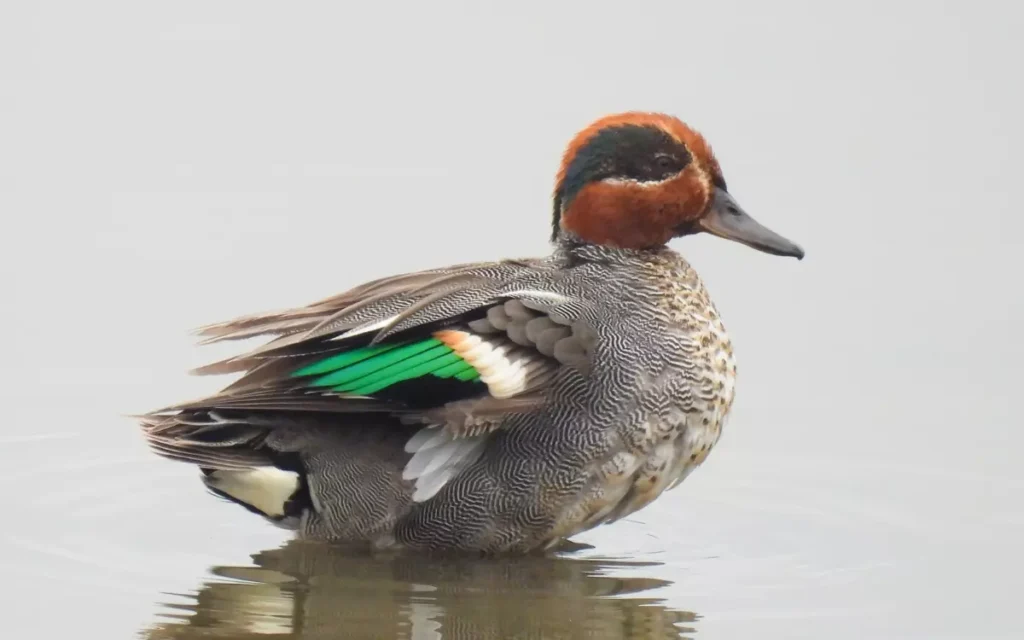
As the smallest North American dabbling duck, the Green-winged Teal packs a lot of beauty into a compact size. The male’s chestnut head, bright green eye patch, and intricate feather patterns are mesmerizing. Their swift and agile flight maneuvers, often in tight flocks, are a testament to their dynamism.
- Length: 12.2-15.3 inches (31-39 cm)
- Weight: 4.9-17.6 ounces (140-500 g)
- Wingspan: 20.5-23.2 inches (52-59 cm)
9.Gadwall (Mareca strepera):
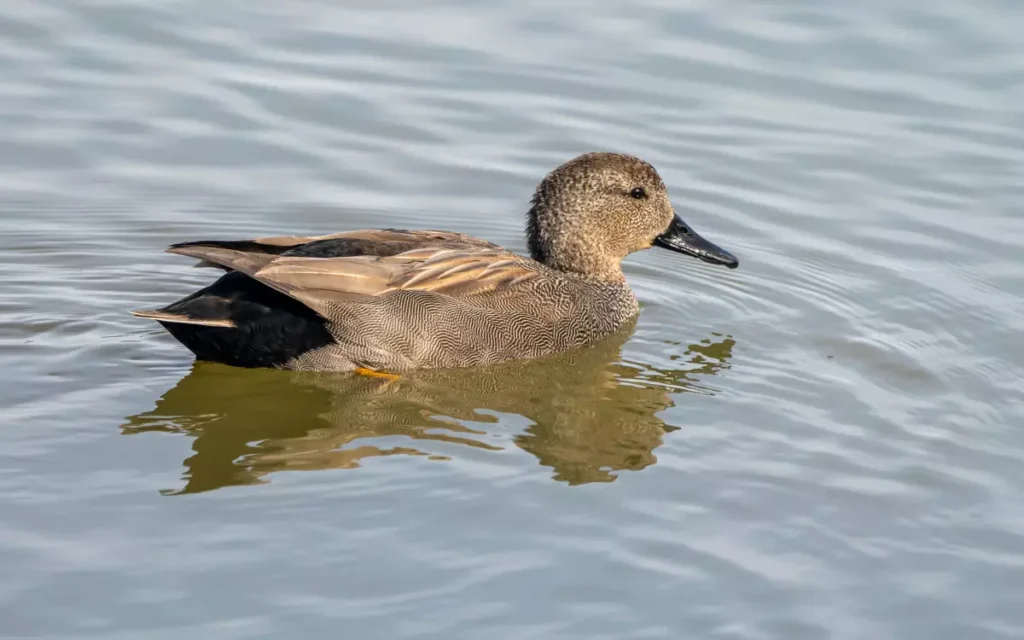
The Gadwall may not have the vibrant colors of some other ducks, but its intricate feather patterns more than makeup for it. Often found in ponds and wetlands, their subtle elegance and calm demeanor make them a peaceful presence. Their soft, mellow calls add to the serene ambiance of their habitats.
- Length: 18.1-22.4 inches (46-57 cm)
- Weight: 17.6-44.1 ounces (500-1250 g)
- Wingspan: 31-33 inches (78-85 cm)
10.Wood Duck (Aix sponsa):
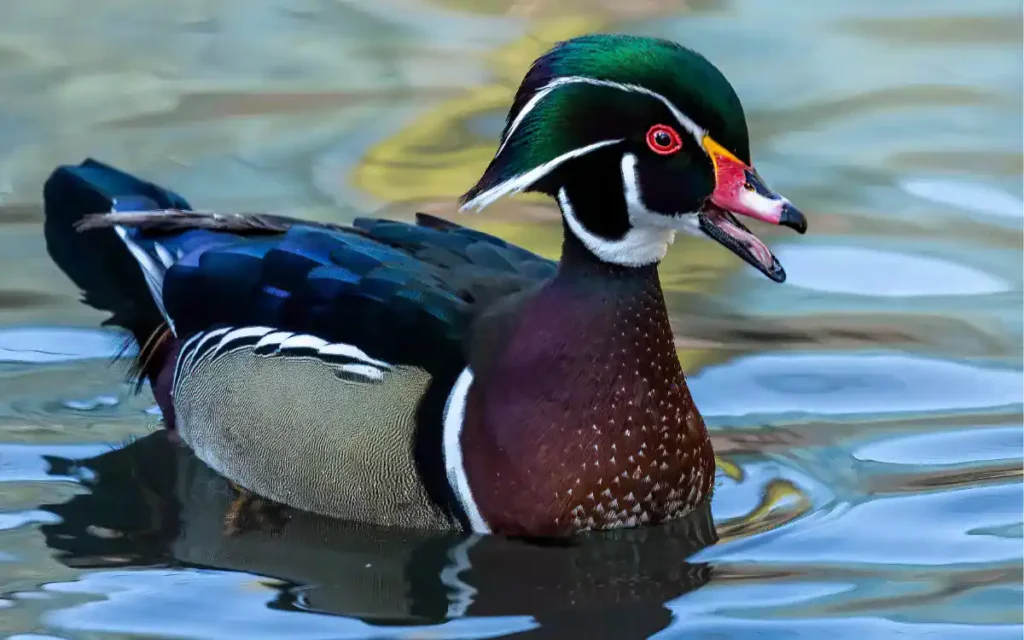
The Wood Duck is a masterpiece of nature’s artistry. With iridescent plumage, striking patterns, and a crest on its head, it’s often considered one of the most beautiful ducks. Their preference for nesting in tree cavities near water showcases their adaptability and connection to forested wetlands.
- Length: 16-21 inches (41-53 cm)
- Weight: 16-30.4 ounces (454-862 g)
- Wingspan: 24-30 inches (61-76 cm)
11.Bufflehead (Bucephala albeola):
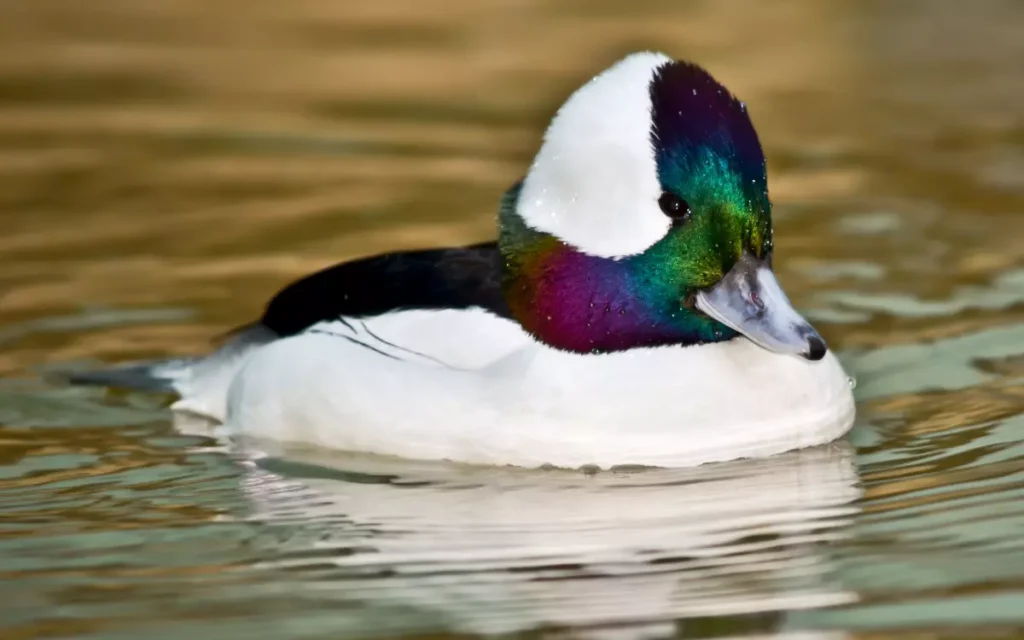
The Bufflehead is a compact diving duck with distinctive head patterns in males. Males have a glossy green-black head with a large white patch, while females have a grayish head. They are known for their swift and erratic flight patterns.
- Length: 13-16 inches (32-40 cm)
- Weight: 9.5-19.4 ounces (270-550 g)
- Wingspan: 21.6 inches (55 cm)
12.Ring-necked Duck (Aythya collaris):
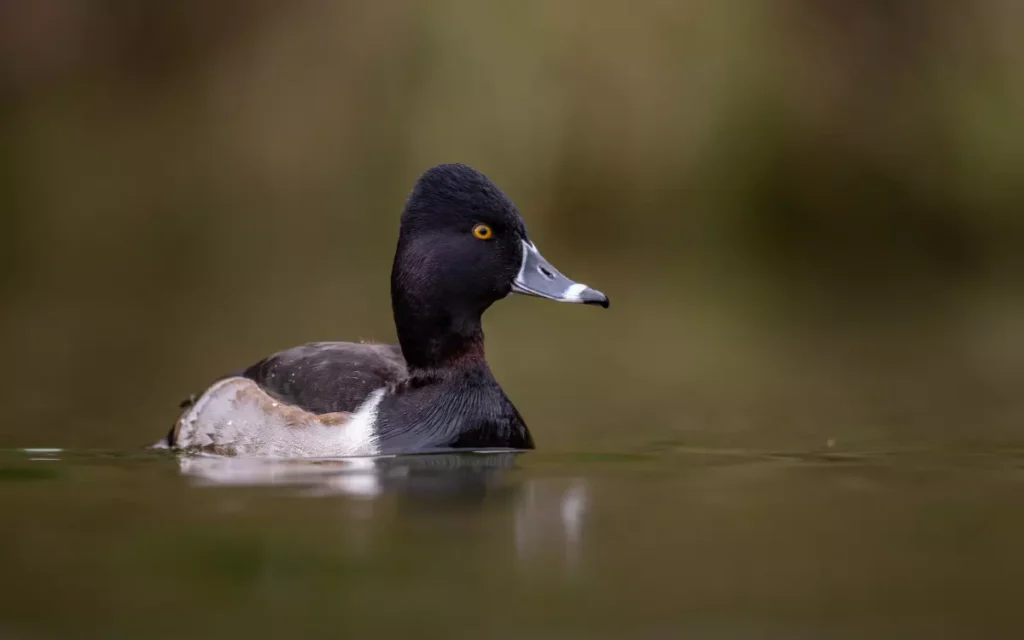
This medium-sized diving duck has a distinctive white ring around its bill, which is more noticeable than the faint ring around its neck. Males have a glossy black head, while females are brown with a white eye-ring.
- Length: 15.3-18.1 inches (39-46 cm)
- Weight: 17.3-32.1 ounces (490-910 g)
- Wingspan: 24.4-24.8 inches (62-63 cm)
13.Lesser Scaup (Aythya affinis):
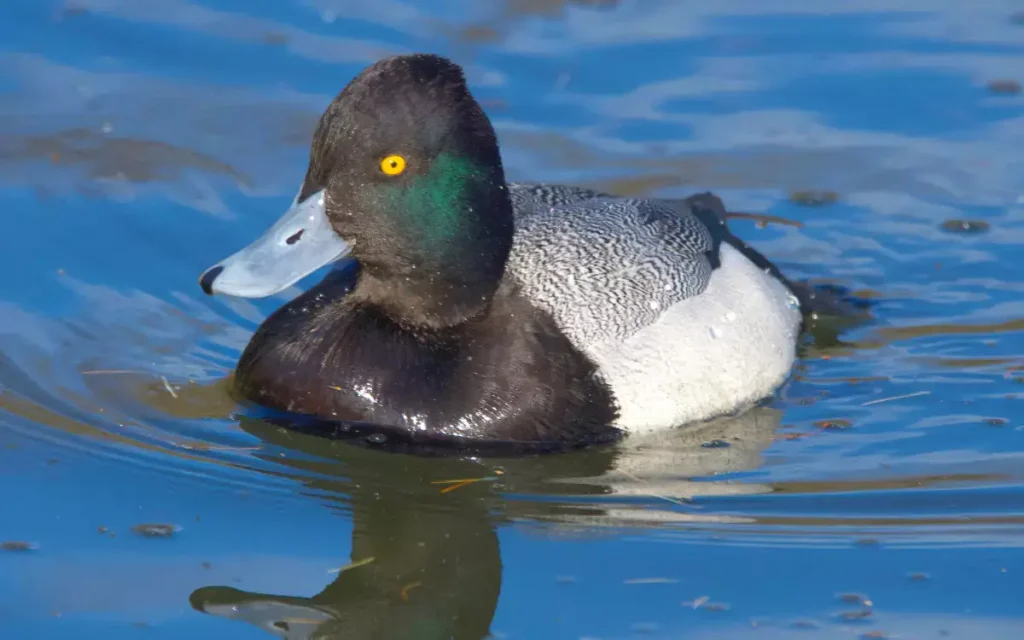
The Lesser Scaup is similar to the Greater Scaup but is slightly smaller. Males have a glossy purplish head, while females are brown. They are commonly found in freshwater ponds and lakes.
- Length: 15.3-18.1 inches (39-46 cm)
- Weight: 16.0-38.4 ounces (454-1089 g)
- Wingspan: 26.8-31 inches (68-78 cm)
14.Greater Scaup (Aythya marila):
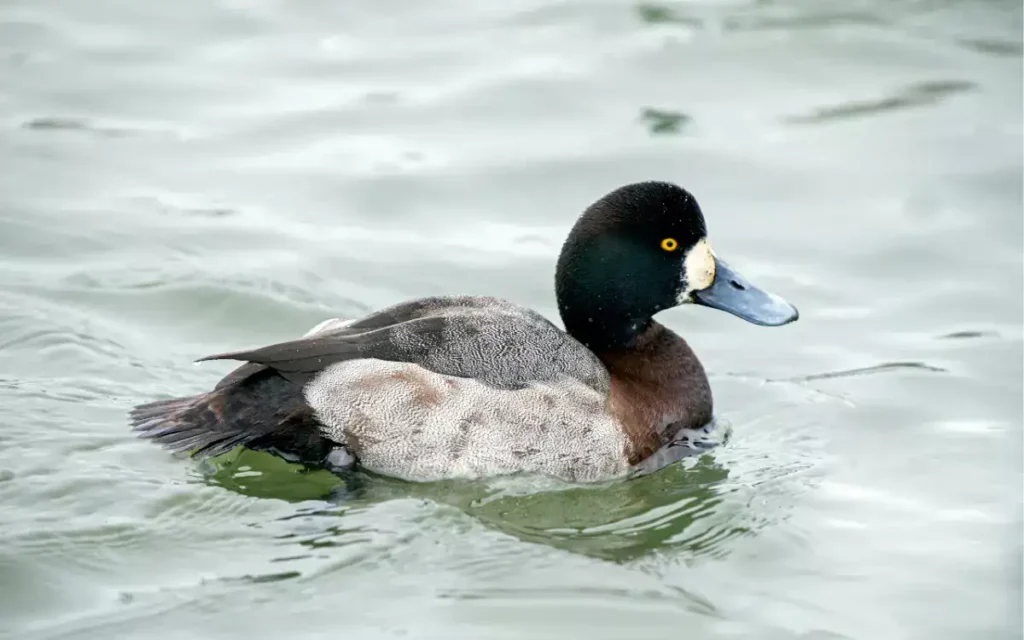
Often found in coastal waters, the Greater Scaup is a medium-sized diving duck with a round head. Males have a glossy green-black head, while females are brown with a white face patch.
- Length: 15.3-22.1 inches (39-56 cm)
- Weight: 25.6-48.0 ounces (726-1360 g)
- Wingspan: 28.4-31.1 inches (72-79 cm)
15.Ruddy Duck (Oxyura jamaicensis):
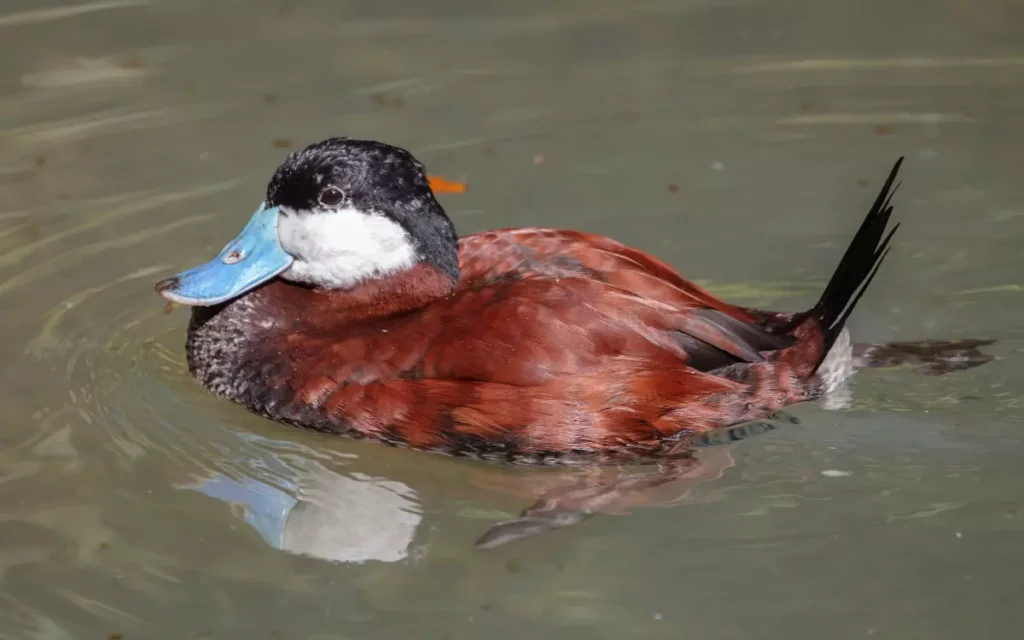
Recognized by its bright blue bill during breeding season, the Ruddy Duck is a small, stout duck with a spiky tail that it often holds upright. Males have a chestnut body and black crown, while females are brown.
- Length: 13.5-17 inches (34-43 cm)
- Weight: 10.6-38.4 ounces (300-1089 g)
- Wingspan: 18.5-24.4 inches (47-62 cm)
Related article: Red, Orange, and Yellow Birds in New Hampshire: A Vibrant Avian World
16.Redhead (Aythya Americana):
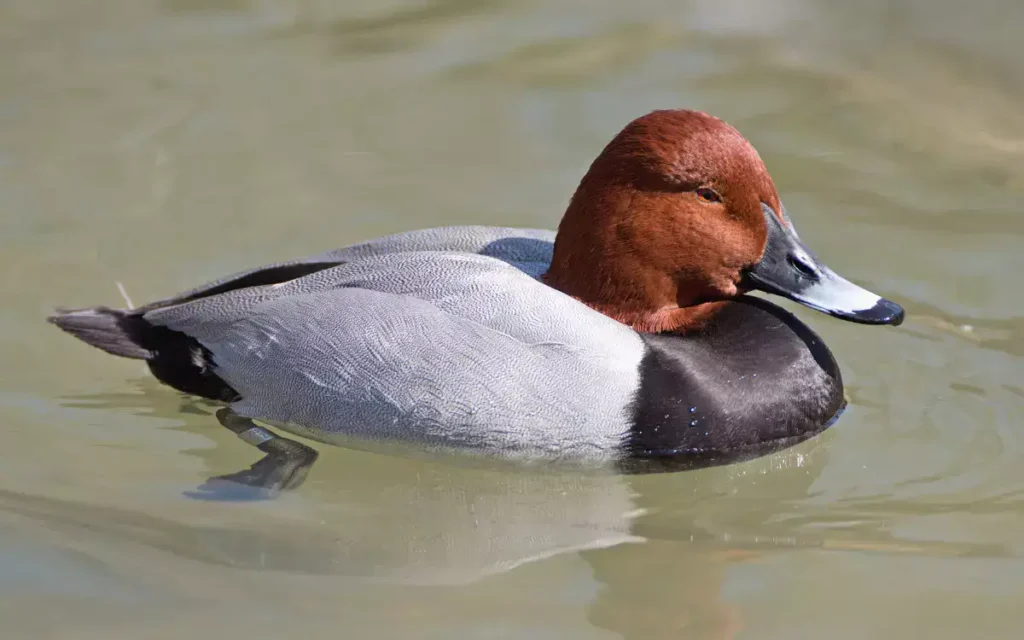
The Redhead is a medium-sized diving duck with a bright red head in males and a brown head in females. They are known for their broad, flat bill and prefer freshwater habitats.
- Length: 16.5-22 inches (42-56 cm)
- Weight: 1.5-3.2 pounds (680-1450 g)
- Wingspan: 29-35 inches (74-89 cm)
17.Canvasback ( Aythya valisineria):
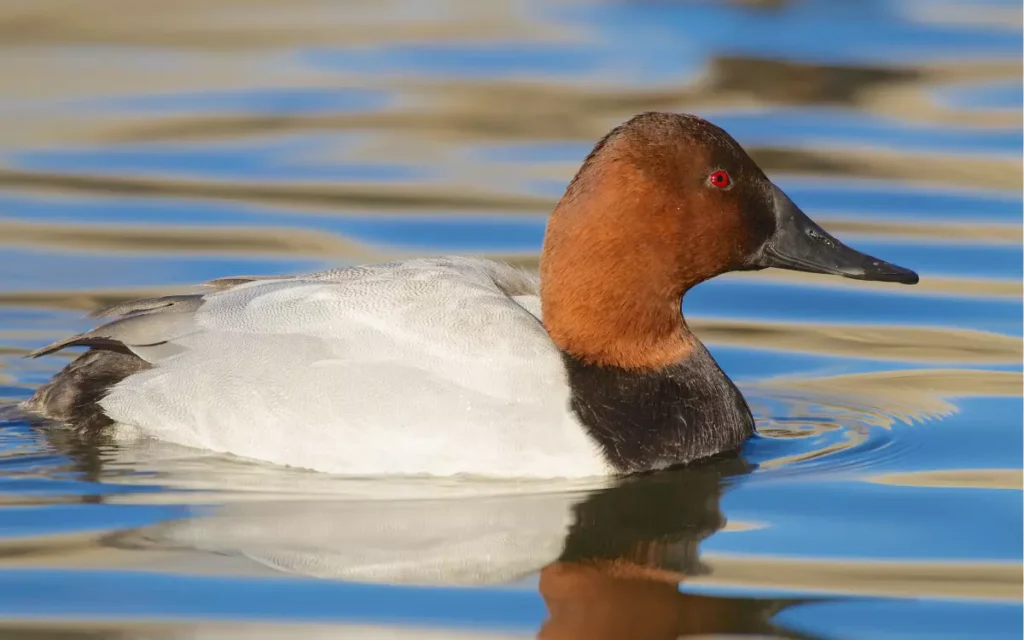
The Canvasback is a large diving duck with a long, sloping forehead and a reddish head in males. Females are brown with a pale face. They are often found in freshwater ponds and marshes.
- Length: 18.9-22.1 inches (48-56 cm)
- Weight: 30.4-56.0 ounces (862-1588 g)
- Wingspan: 31.1-35.0 inches (79-89 cm)
18.Hooded Merganser ( Lophodytes cucullatus):
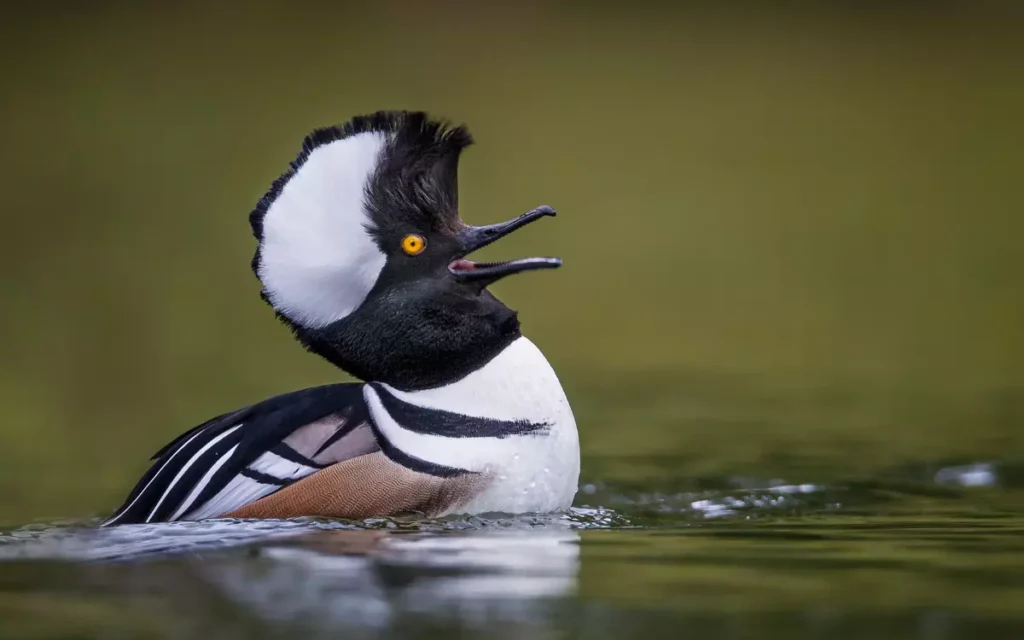
A small diving duck, the male Hooded Merganser is easily recognizable by its striking black and white hooded crest. Females have a reddish-brown hood. They are often found in wooded ponds and rivers, diving for fish and crustaceans.
- Length: 15.8-19.3 inches (40-49 cm)
- Weight: 16.0-31.0 ounces (453-879 g)
- Wingspan: 23.6-26.0 inches (60-66 cm)
19.Common Merganser (Mergus merganser):
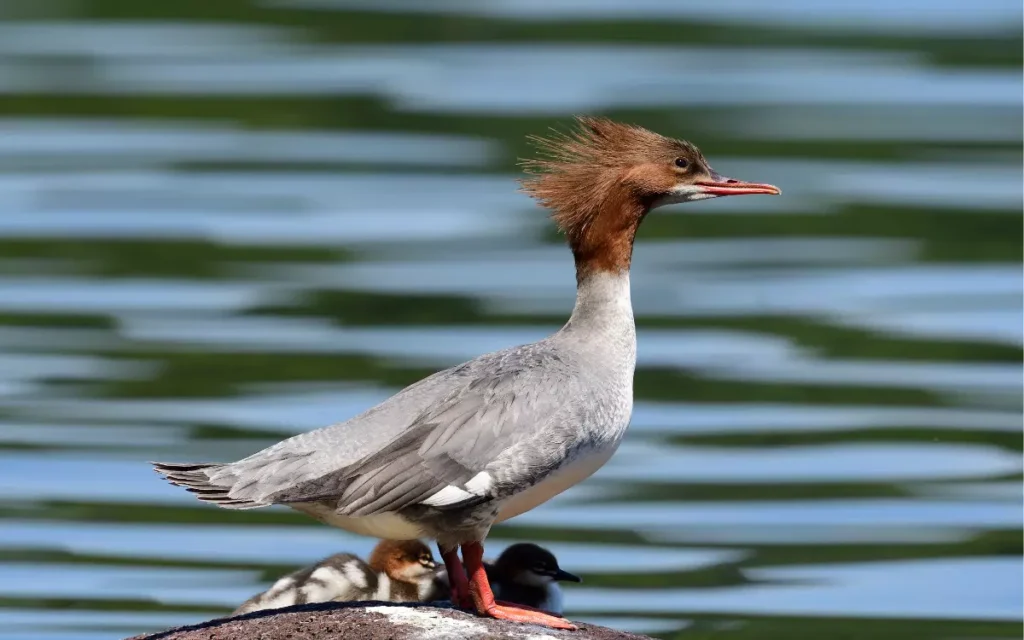
A large diving duck, males have a glossy green-black head and white body, while females sport a rusty head with a white chin. They are often seen in freshwater rivers and lakes, feeding primarily on fish.
- Length: 21.3-27.9 inches (54-71 cm)
- Weight: 31.8-76.2 ounces (900-2160 g)
- Wingspan: 33.9-38.98 inches (86-99 cm)
20.Common Eider (Somateria mollissima):
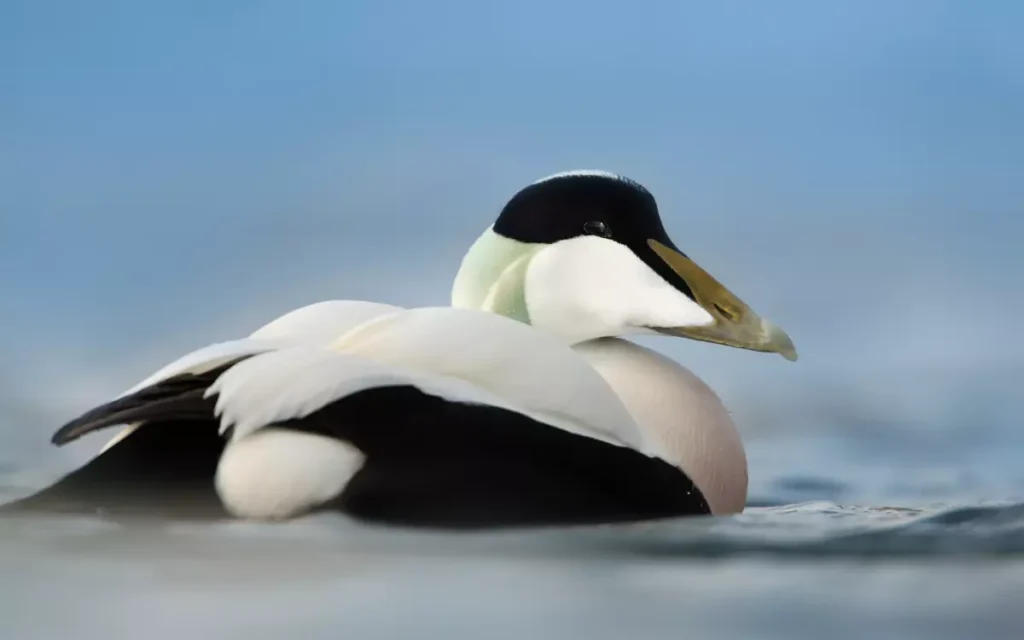
The largest duck in the Northern Hemisphere, males are black and white while females are brown. They are sea ducks, known for their eiderdown feathers which females use to line their nests.
- Length: 50-71 cm (19.5-28 in)
- Weight: 0.81-3.04 kg (1.8-6.7 lb)
- Wingspan: 80-110 cm (31-43 in)
21.Common Goldeneye (Bucephala clangula):

Medium-sized diving ducks, males have a greenish-black head with a circular white patch, while females are brown. They are named for their golden-yellow eyes.
- Length: 18-28 inches (45-71 cm)
- Weight: 1.8-6.7 pounds (0.8-3.0 kg)
- Wingspan: 77-110 cm (30-43 in)
22.Red-breasted Merganser (Mergus serrator):
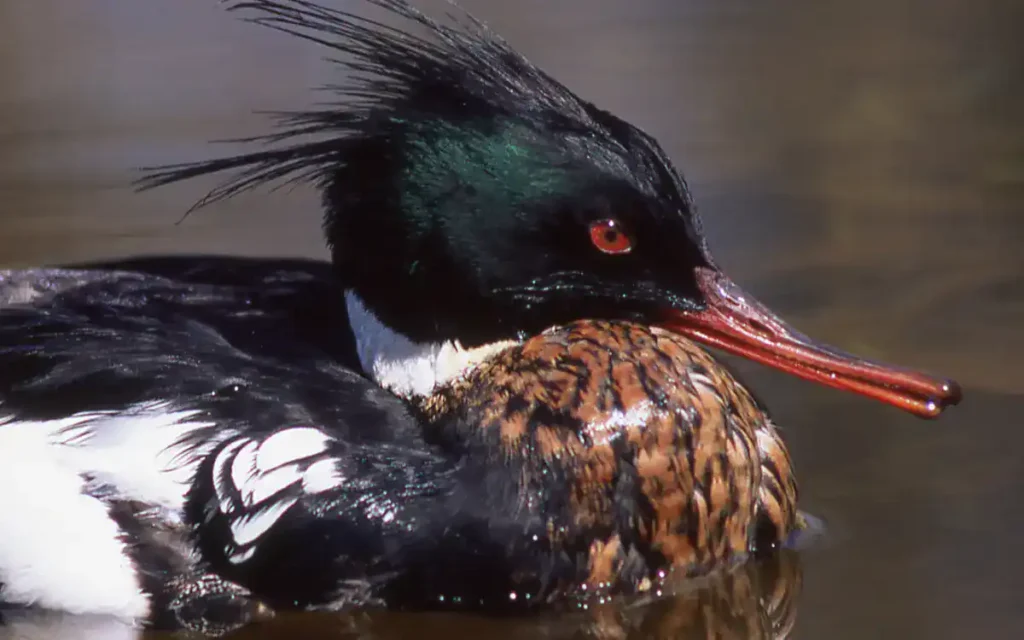
A slender diving duck, males have a green-black head and reddish-brown breast, while females are grayish with a reddish-brown head. They are often found in saltwater coastlines and freshwater lakes.
- Length: 20-25 inches (51-64 cm)
- Weight: 28-48 ounces (800-1350 g)
- Wingspan: 26-29 inches (66-74 cm)
Read also: 11 Largest Birds In New Hampshire
23.White-winged Scoter (Melanitta deglandi or Melanitta fusca deglandi):
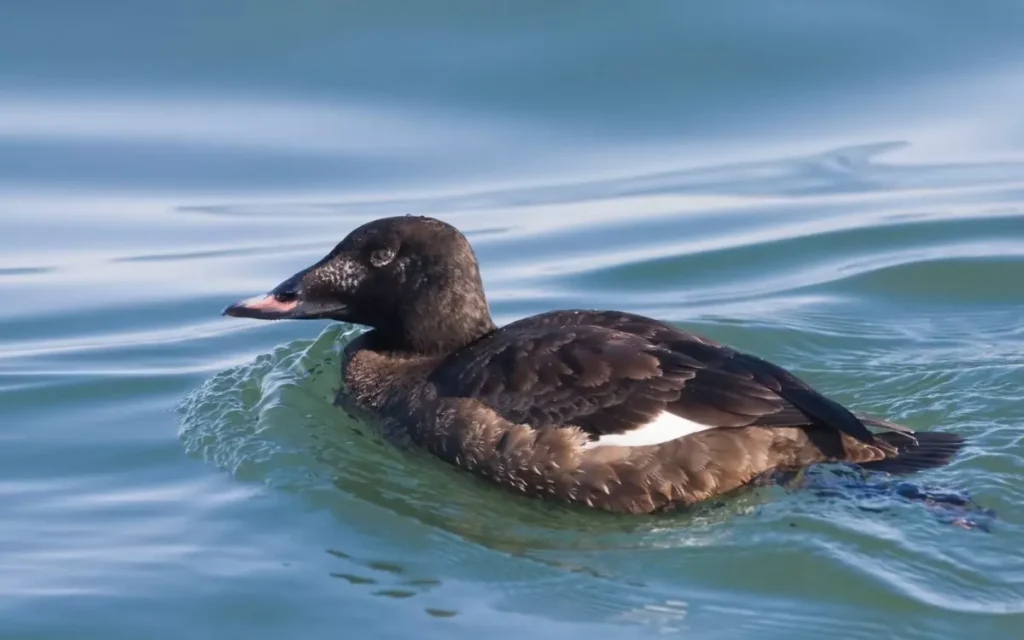
A large sea duck, males are mostly black with a white eye patch and white wing patch, while females are brown. They primarily feed on mollusks.
- Length: 19-24 inches (48-61 cm)
- Weight: 33.5-63.5 ounces (950-1800 g)
- Wingspan: 31.5 inches (80 cm)
24.Surf Scoter (Melanitta perspicillata):
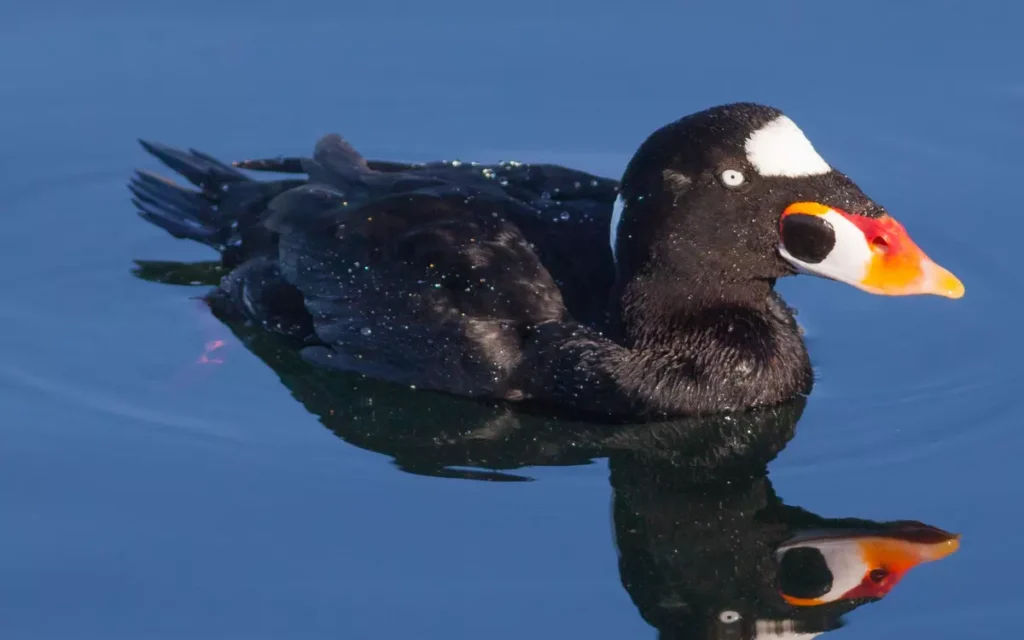
(Melanitta perspicillata): Recognizable by the male’s distinctive multi-colored bill, they are mostly black with white patches on the forehead and nape. Females are brown. They are sea ducks, often seen in coastal waters.
- Length: 18.9-23.6 inches (48-60 cm)
- Weight: 31.8-63.5 ounces (900-1800 g)
- Wingspan: 29.9-30.3 inches (76-77 cm)
25.Long-tailed Duck (Clangula hyemalis):
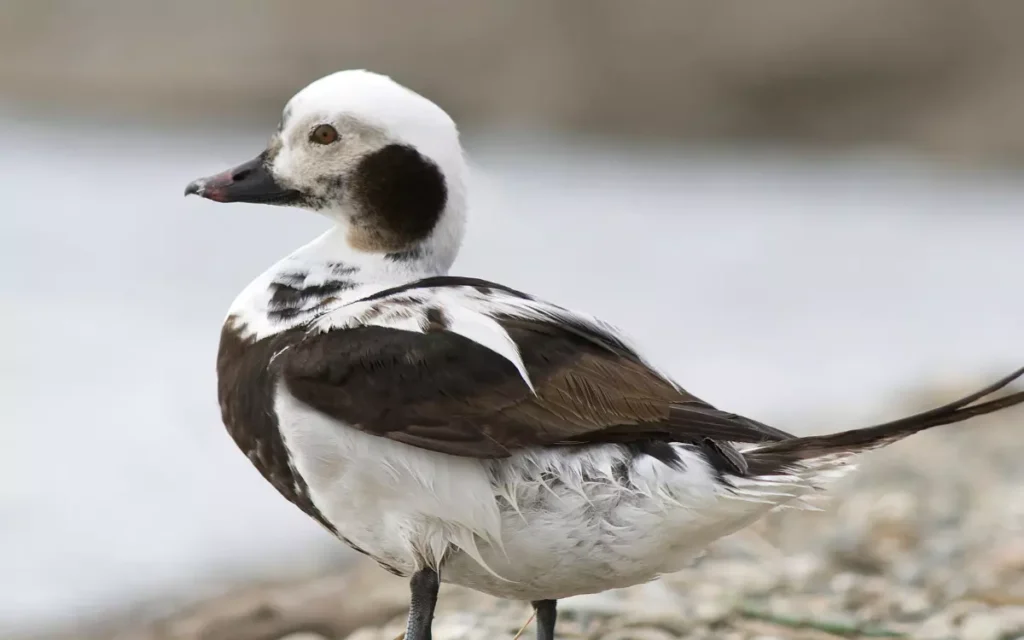
Known for the male’s long, pointed tail feathers, they have complex and varying plumage patterns. They are sea ducks, often diving deep to feed on crustaceans and mollusks.
- Length: 15.0-16.9 inches (38-43 cm)
- Weight: 17.6-33.5 ounces (500-950 g)
- Wingspan: 28-79 cm (11-31 in)
26.Black Scoter (Melanitta americana):
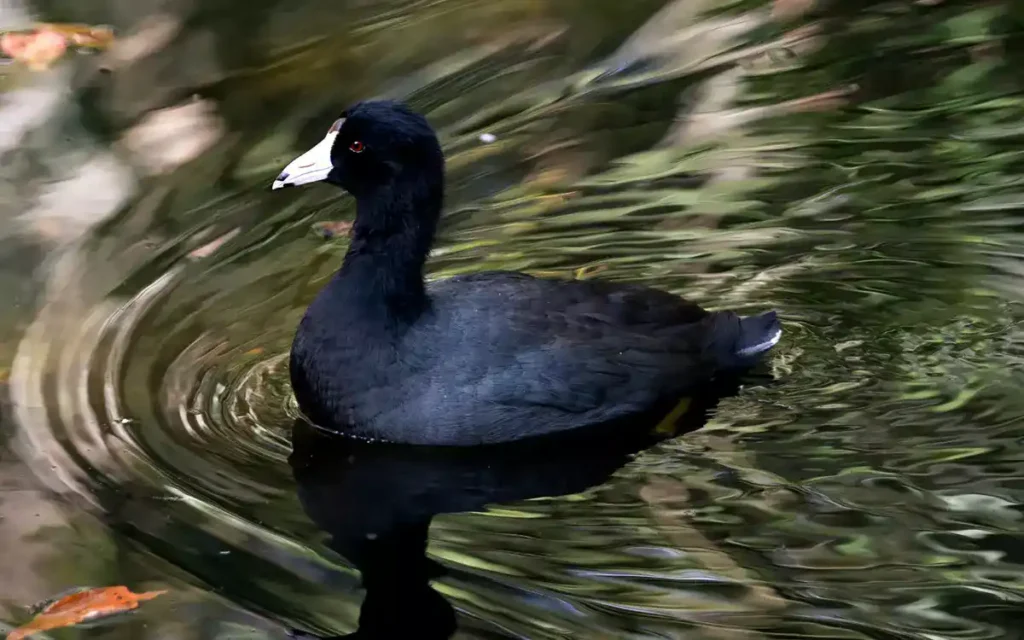
Males are entirely black with a yellow knob on the bill, while females are brown. They are sea ducks, often found in coastal waters and bays.
- Length: 16.9-21.5 inches (43-55 cm)
- Weight: 30.4-63.5 ounces (862-1800 g)
- Wingspan: 27.6-31.5 inches (70-80 cm)
27.Barrow’s Goldeneye (Bucephala islandica):
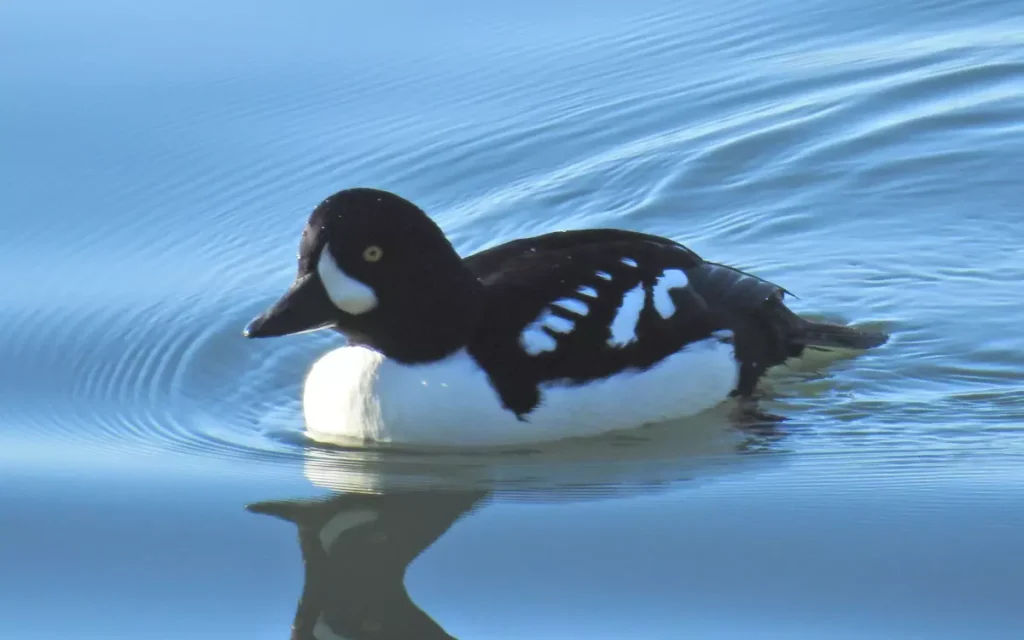
Similar to the Common Goldeneye, males have a purplish-black head with a crescent-shaped white patch, while females are brown. They prefer freshwater habitats.
- Length: 19.2 inches (49 cm) long, and females are typically 17 inches (43 cm) long
- Weight: On average, adult males weigh 2.13 pounds (970 g), and females weigh 1.31 pounds (590 g)
- Wingspan: The Barrow’s Goldeneye has a wingspan of 27.6-28.7 inches (70-73 cm)
28.King Eider (Somateria spectabilis):
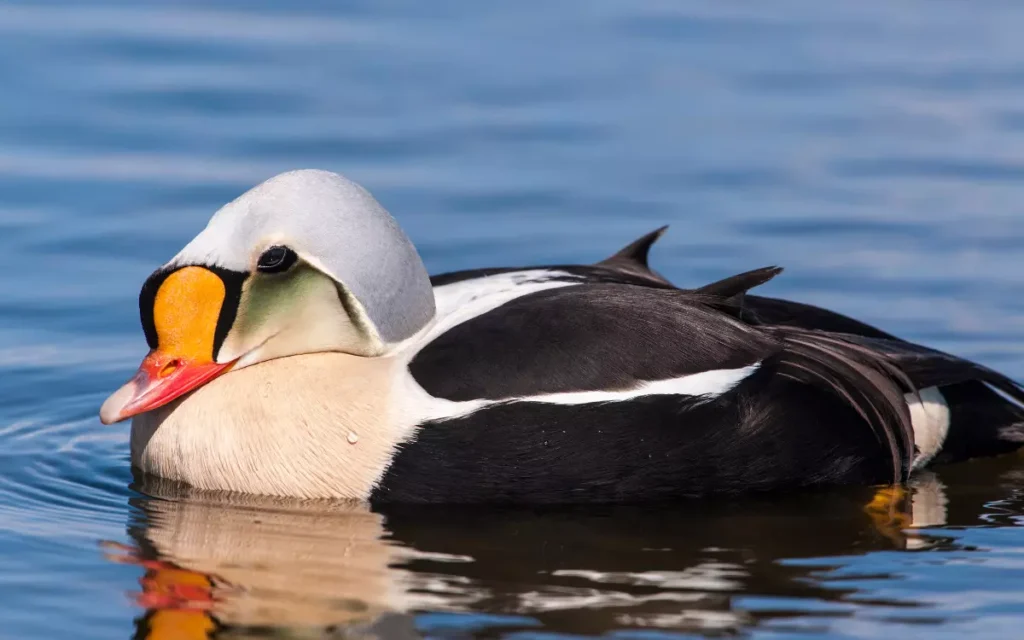
A large sea duck, males have ornate plumage with a bulbous bill, while females are brown. They are known to breed in the Arctic and winter in northern coastal waters.
- Length: 20-28 inches (50-70 cm)
- Weight: 3.4-3.6 pounds (1.55-1.65 kg) for males, 3.45-3.68 pounds (1.57-1.67 kg) for females
- Wingspan: 34-40 inches (86-102 cm)
Duck Habitats in New Hampshire
- Wetland environments: Wetlands provide a crucial habitat for many duck species, offering both food and shelter.
- Shallow ponds: These are often the preferred habitats for ducks as they provide easy access to food and protection from predators.
- Importance of beaver population: Beavers play a significant role in creating and maintaining wood duck habitats by building dams and creating ponds.
Duck Migration Patterns
- Overview of duck migration: New Hampshire witnesses a variety of ducks migrating during different seasons.
- Specific migration patterns: Species like the Ring-necked Duck have unique migration patterns that can be observed in New Hampshire.
Duck Hunting in New Hampshire
- Regulations and requirements: It’s essential to be aware of the specific rules and guidelines for hunting waterfowl in New Hampshire.
- Importance of a Migratory Waterfowl License: To hunt ducks, one must obtain this license, emphasizing the importance of regulated hunting.
Conservation Efforts
- Role of organizations: Groups like Ducks Unlimited play a pivotal role in conserving duck habitats.
- Importance of conservation: Ensuring the conservation of habitats is crucial for maintaining healthy duck populations in New Hampshire and beyond.
Some FAQs :
What are the small ducks in New Hampshire?
New Hampshire is home to several small duck species. One of the most common is the Bufflehead, known for its compact size and distinctive head patterns.
Are there ducks in New Hampshire?
Yes, New Hampshire boasts a diverse range of duck species, both resident and migratory, that can be spotted in various habitats throughout the state.
What ducks are on New England?
New England, which includes New Hampshire, is a haven for many duck species. From the Mallard to the Common Eider, the region offers a rich diversity of waterfowl.
What are the white ducks with black heads in New Hampshire?
The ducks with white bodies and black heads commonly seen in New Hampshire are the Common Goldeneyes. Males are especially noticeable with their vibrant golden eyes.
Conclusion:
Ducks are really important in New Hampshire. If we see lots of ducks, it means the wetlands are healthy. New Hampshire has many kinds of ducks, and each one is special. We should all help keep them safe by hunting responsibly and supporting conservation.


